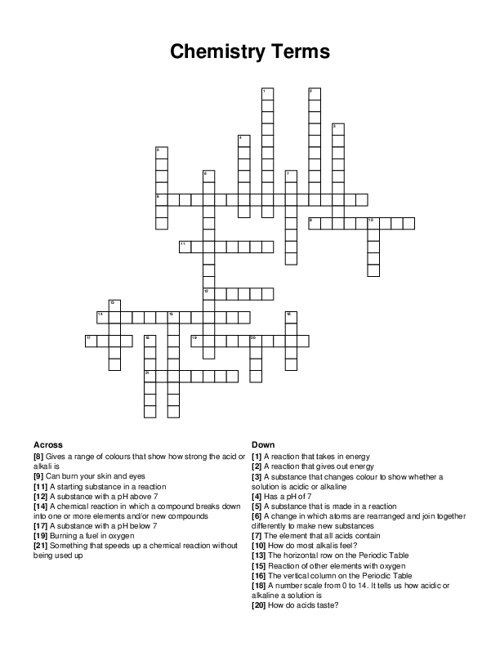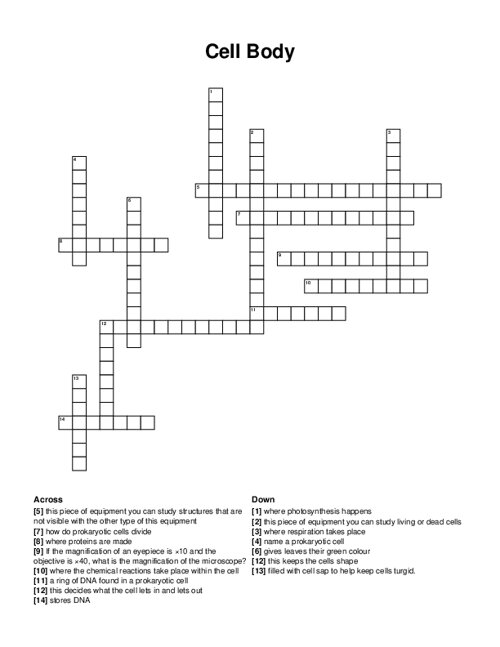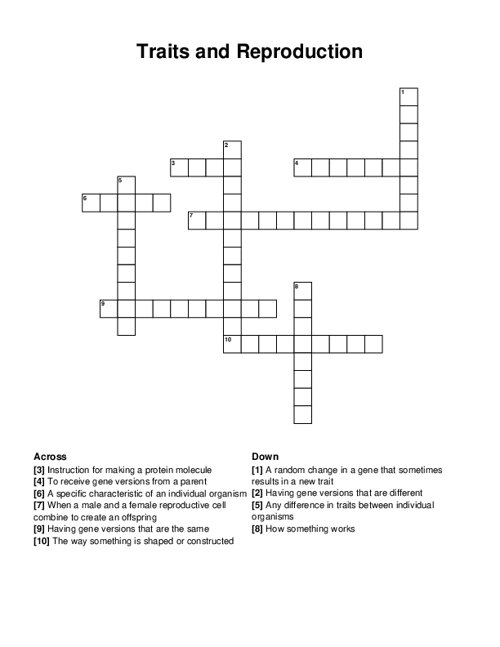Protein Catabolism Crossword Puzzle
Download and print this Protein Catabolism crossword puzzle.
Related puzzles:
QUESTIONS LIST:
- ammoniotelic : term used to describe organisms that release n as nh4+ - aquatic vertebrates and invertebrates are examples.
- glucogenic : term for amino acids that eventually give rise to glucose after degradation.
- pyruvate : the carbon skeleton of ala, cys, gly, ser, thr, and trp give rise to this molecule
- ubiquitin : protein present in eukaryotic cells that marks proteins for degradation
- fumarate : molecular link between the urea cycle and the citric acid cycle
- acetyl coa : the carbon skeletons of ile, leu, and trp give rise to this molecule
- pyridoxal phosphate : coenzyme of all aminotransferase enzymes, responsible for formation of schiff base
- ketogenic : term for amino acids that give rise to ketone bodies or fatty acids after degradation
- succinyl coa : the carbon skeleton of ile, met, thr, and val give rise to this molecule
- four : number of ub molecules that is required to send a strong degradation signal
- oxygenases : enzymes required for degradation of aromatic amino acids
- mitochondria : deamination of amino acids occurs in this cellular location
- gdh : abbreviation for the enzyme that catalyzes the oxidative deamination reaction responsible for liberating free nh4+
- cytoplasm : hydrolysis of arginine to produce urea and ornithine occurs in this cellular location
- lysine : amino acid residue that reacts with ubiquitin to form an isopeptide bond and tag a protein for degradation
- liver : major site of amino acid degradation
- carbamoyl phosphate : synthetase enzyme responsible for the committed step in the urea cycle
- alanine : nitrogen atoms from bcaas used for fuel in the muscles are transported to the liver for degradation as this molecule
- arginine : carbon skeleton of this molecule is conserved as fumarate





